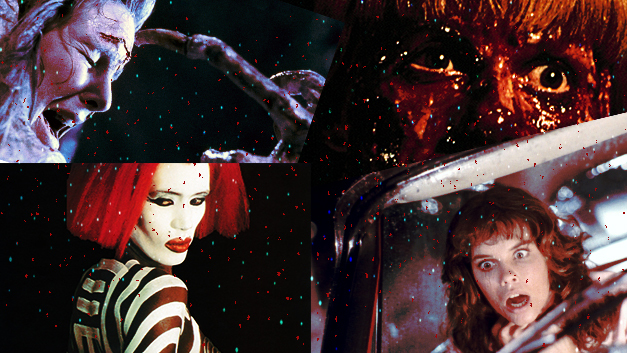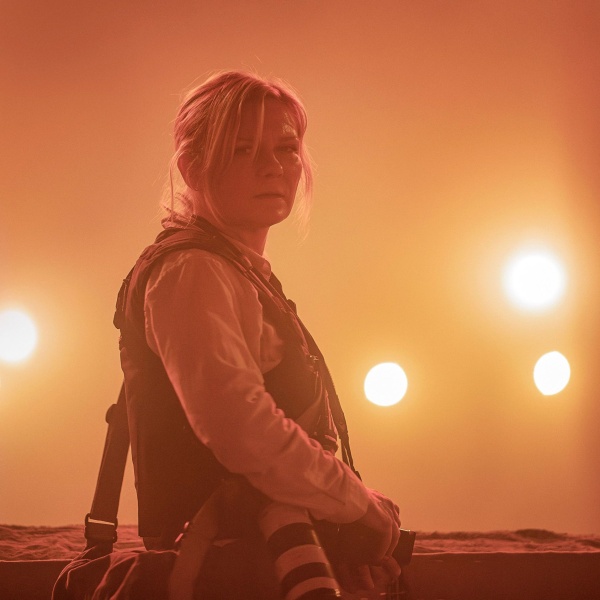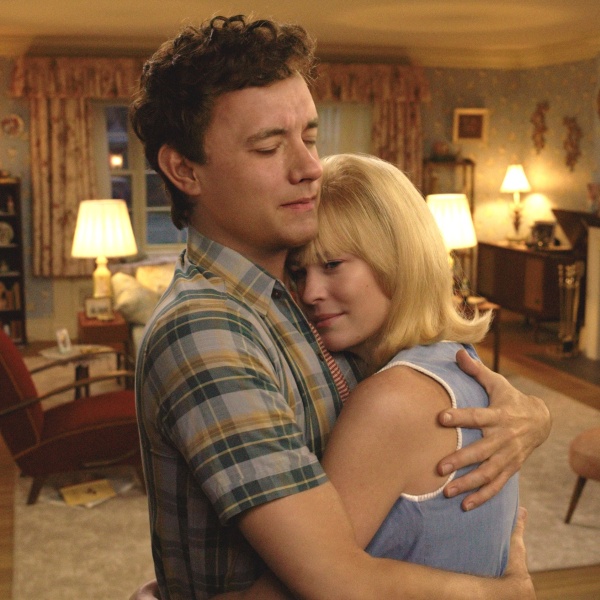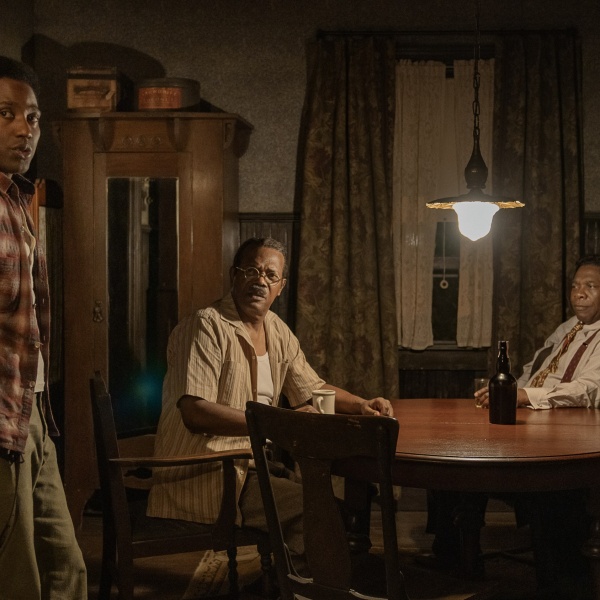 There’s no denying that the 1980s were a phenomenal decade for horror movies. But take a stroll through any horror convention these days and you might leave convinced that it was the only decade for horror movies.
There’s no denying that the 1980s were a phenomenal decade for horror movies. But take a stroll through any horror convention these days and you might leave convinced that it was the only decade for horror movies.
In addition to standalone classics like “The Shining” and “The Thing,” the ‘80s saw the birth of virtually ever major franchise that continues to dominate horror iconography. Wes Craven introduced us to Freddy Krueger in “Nightmare on Elm Street,” Jason Voorhees (eventually) emerged as the invincible antagonist of the “Friday the 13th” movies, Sam Raimi brought “The Evil Dead” into the world, and ‘70s films like “Halloween” and “The Texas Chainsaw Massacre” cemented themselves as bona fide franchises with an endless stream of popular sequels.
It was a thrilling time to be a horror fan — and many of those movies are still worth revisiting — but what should have been a fun decade’s worth of schlocky classics somehow emerged as the genre’s unimpeachable canon. Countless horror masterpieces that have been released in the last 30 years, but none of them inspire half the costumes, merchandise and remakes that their ‘80s counterparts do. Much like a man who finds a haircut that works for him in 12th grade and decides he never needs to spend another second thinking about grooming, the horror community got stuck in a rut and never quite emerged.
The omnipresence of ‘80s slasher iconography doesn’t just hurt contemporary horror filmmakers — it also does a disservice to the decade’s horror movies that didn’t spawn endless sequels and action figures for grown men. The 1980s were filled with standalone films that deserve to be revisited. As IndieWire’s ‘80s Week comes to a close, we took a walk down memory lane to highlight ten that have stood the test of time.
We’re not claiming all of these selections are unknown movies, but they exist outside the relatively narrow scope of what’s popularly defined as “‘80s horror.” From relatively minor works from the genre’s greatest auteurs to cult classics that have fallen through the cracks, keep reading for our 10 favorite hidden horror movies from the 1980s.
-
“Inferno” (1980)

Image Credit: ©20thCentFox/Courtesy Everett Collection Giallo icon Dario Argento spent the 1980s working at the top of his game — to the point where even his “minor” works would have been highlights in the careers of lesser directors. “Inferno” had the misfortune of following “Suspiria,” which set a bar for box office success that virtually no film could hope to clear. To make matters worse, it was followed by “Tenebrae,” making it the unloved middle child of Argento’s Three Mothers trilogy. Still, it stands on its own as one of the most visually striking films of the decade. The loose plot follows a young poet whose visit to a used bookstore sends her down a rabbit hole of researching the three mythical spirits who control events around the world. But while it contains quite a bit of exposition for the thematic material that connects it to “Suspiria” and “Tenebrae,” “Inferno” is really just an excuse for Argento to flex his mastery of color. Each neon-tinged shot is masterfully composed, filled with equal amounts of classical gothic horror and ’80s sleaze. A divisive box office bomb upon its initial release, “Inferno” was still a perfect kickoff to one of Argento’s richest decades. —CZ
-
“Ghost Story” (1981)

Image Credit: ©Universal/Courtesy Everett Collection After enjoying unprecedented longevity as a song-and-dance man, Fred Astaire made his final film appearance in this slow-burn adaptation of Peter Straub’s popular horror novel. He stars alongside fellow Hollywood elder statesmen John Houseman, Douglas Fairbanks, and Melvyn Douglas (the latter two of whom also made their final onscreen appearances in the film) in a story about a group of men who bond over ghost stories and find themselves haunted by the findings of a young man seeking to gain their friendship. While many criticized the film for simplifying some of the complex ideas of its source material, solid acting and stellar production design help the Gothic saga stand out as a standalone ghost story that more than lives up to its name. —CZ
-
“Christine” (1983)

Image Credit: ©Columbia Pictures/Courtesy Everett Collection John Carpenter adapting Stephen King for the story of a killer car named “Christine”? No wonder producer Richard Kobritz, who’d previously worked on the 1979 “Salem’s Lot” miniseries, jumped at the chance to secure the rights, and had screenwriter Bill Phillips working from King’s manuscript months before the 1983 book even hit shelves. Not to be confused with the likes of lesser anthropomorphic horror (see 2010’s schlocky “Rubber” about a killer tire), “Christine” delivers the snappy terror and smart characterwork fans had come to expect for Carpenter, but this time with a lighter frame and a full tank of fun. When a bright red 1958 Plymouth Fury comes off the assemblyline and later finds its way into the life of outcast Arnie Cunningham (Keith Gordon), a kind of “Child’s Play” friends-til-the-end saga ensues as Christine defends her owner like a demonically possessed Herbie. —AF
Read IndieWire’s complete list of The Best Car Movies.
-
“Slaughter High” (1986)

Image Credit: Vestron Pictures The studio behind the incomprehensible horror-with-a-dash-of-kung-fu classic “Pieces” got the band back together in 1986 for another delightfully weird Italian slasher flick about an April Fools Day prank gone awry. After a series of abuses from the popular kids leaves outcast Marty Rantzen burned by acid and permanently disfigured, he spends his life hiding out in his abandoned high school plotting his revenge. When his bullies eventually return to the abandoned school, he’s waiting to greet them with an incredibly creative array of murder methods. “Slaughter High” features the same cheap production value and incomprehensible English dubbing that “Pieces” fans know so well — but it also retains the knack for creative violence and killer final shots that made its predecessor a cult classic. —CZ
-
“Vamp” (1986)

Image Credit: Courtesy Everett Collection The insidious seduction of nightlife takes a human — well, human adjacent — form in Richard Wenk’s “Vamp”: a 1986 horror-comedy featuring an unrecognizable, but magnetic as ever Grace Jones. “Today, I was nearly hung. I got into a fight with a psychotic albino. I ate a cockroach,” complains protagonist Keith (Chris Makepeace) — one of several college students swept into a nightmarish evening by an encounter with Jones’ mesmeric stripper vampire, Katrina. “My best friend disappeared. And then I’m nearly assassinated by a runaway elevator,” he continues. Tough luck, kid. It’s Katrina’s blood-filled water bed; you’re just dying on it. —AF
-
“Bad Taste” (1987)

Image Credit: ©Anchor Bay/Courtesy Everett Collection If you haven’t yet fallen for the goofy-gory charm of “Bad Taste,” then you’re missing out on the best Peter Jackson deep-cut available. When an entire town goes missing, special agents discover a race of aliens harvesting humans for an intergalactic fast-food chain. Sloppy and slapstick, Jackson’s debut is lovably low-budget and famously features the filmmaker fighting himself in a scene on a cliff. Not all of it holds up (the Astro Investigation and Defense Service or “AIDS” joke is especially rough), but Jackson’s remarkable inventiveness is on display from minute one. Shot over four years with the help of his friends and coworkers, Jackson originally set out to make a short film before the project snowballed into a feature. He hand-crafted all of the film’s props, costumes, and practical effects — including the finale fifth act in which we finally see the aliens’ true form. —AF
Read IndieWire’s complete list of The Scariest Alien Movies.
-
“Prince of Darkness” (1987)

Image Credit: ©Universal/Courtesy Everett Collection Another “minor” work in the oeuvre of one of the decade’s greatest horror masters, “Prince of Darkness” saw John Carpenter continuing to explore his fascination with the multiple shapes that the essence of evil can take on. When the operators of a monastery become concerned by the presence of an unidentifiable liquid, they bring in a group of elite quantum physics students to investigate. After enough goes wrong, even their secular scientific minds are forced to accept the conclusion that it’s probably the embodiment of Satan. “Prince of Darkness” isn’t just a great film in its own right — it also makes works like “The Thing” seem richer by illuminating more of Carpenter’s thoughts on their themes. —CZ
-
“Paperhouse” (1988)

Image Credit: ©Vestron Pictures/Courtesy Everett Collection Few films from the 1980s — or any subsequent decade, for that matter — have been able to fuse images from dreams and reality more poetically than Bernard Rose’s horrifying “Paperhouse.” Telling the story of two sick children who are able to visit each other in a surreal dream world that becomes hard to distinguish from waking life, “Paperhouse” can be read as a straightforward drama if you only pay attention to the parts that take place in the real world. But the haunting images that Rose is able to capture in the children’s dreams places the film in the same category as the best contemporary adult fairy tales — and makes it a must-watch for any ’80s horror completionist. —CZ
-
“Pumpkinhead” (1989)

Image Credit: ©United Artists/Courtesy Everett Collection There’s no world in which a horror flick with the title “Pumpkinhead” didn’t become a slasher franchise. But just because Stan Winston’s directorial debut has three sequels (to which the filmmaker did not contribute) that doesn’t mean this terrifying and triumphant revenge epic has been given its due. Part “Pet Sematary,” part “Witches,” part “I Know What You Did Last Summer,” this fiendishly fun 1988 monster movie stars Lance Henriksen as a grieving father who uses dark magic to seek revenge when his son is killed in a dirt biking accident. Come for the promise of the “Aliens” actor in one of his most criminally underrated performances; stay for the campy practical effects that will freaking blow your gourd. —AF
-
“Society” (1989)

Image Credit: Courtesy Everett Collection My kingdom for a good shunting! A staple on any list of cinematic shockers worth its salt, Brian Yuzna’s “Society” takes forever to get going. Seriously, once you’re passed the ass-backwards shower silhouette scene it feels like nothing happens…for like an hour. But trust me when I tell you, waiting for the last course of this eat-the-rich feast is well worth it as “Days of Our Lives” actor Billy Warlock becomes final girl to one of the most magnificently gelatinous tortures in horror history. The climactic “shunting scene” (what is that, you wonder? Watch!) won’t scratch the anti-capitalist itch the film’s Beverly Hills setting gives you quite enough. But what “Society” lacks in narrative justice, it makes up for with the deranged masterwork of genre genius/special effects artist Screaming Mad George. Even reimagined upside-down or inside-out, you will never see anything like the end of “Society.” —AF





